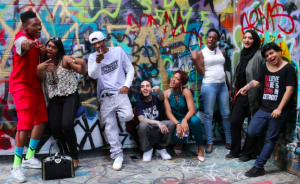The design principle I relate to most is Number 7: We share design knowledge and tools with our communities.
In summer 2016 we did a televised version of the youth program I’d been running for 10 years. The goal was to document the social emotional learning process that occurs for youth creating media in a multicultural environment.
Our goal was to be transparent with our own process while simultaneously providing education and access to new technology. We first did a challenge on analyzing how the kids “showed up” in their auditions and what our first impressions of them were. Then they had to share how they felt in an “own your narrative” exercise. Then we taught them how to pitch and they had to give a 1 minute pitch to a live audience about why their short film idea should be picked. Then finally, we taught them how to shoot 360 video and they had to shoot a short 360 VR film.
Not only were we trying to be transparent in our process with the students, but also to the audience so we were tasked with the challenge of both highlighting the students’ progress without exploiting their experiences. We were doing a process while we were teaching a process while we were filming the process of us teaching the process.
The ethos was to challenge the dominant narrative that says inner city youth of color are unintelligent, lazy, powerless, victims of environment, etc. We wanted to highlight the creativity, ingenuity, resourcefulness, resilience, and general power and potential that I saw in my students every year that I felt the mainstream media rarely showed.
